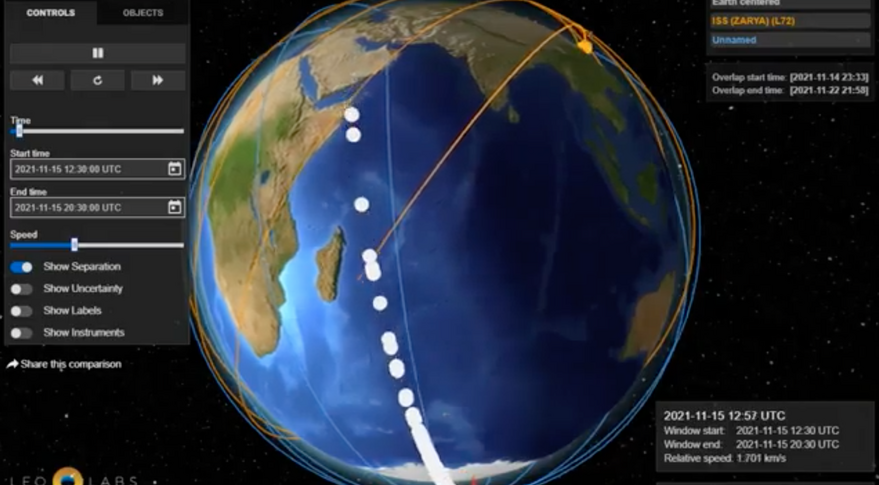LeoLabs tracks debris cloud expanding in low Earth orbitby Debra Werner — November 16, 2021 [SN]
 In this LeoLabs image, the International Space Station's orbit is depicted in orange. The while circles show debris stemming from the Nov. 15 Russian antisatellite test. Credit: LeoLabs
In this LeoLabs image, the International Space Station's orbit is depicted in orange. The while circles show debris stemming from the Nov. 15 Russian antisatellite test. Credit: LeoLabsSAN FRANCISCO – LeoLabs was alerted early Nov. 15 that something was happening in low Earth orbit.
Before the Silicon Valley space mapping startup heard of the Russian antisatellite test, its global network of phased array radars detected an object in low Earth orbit that quickly turned into six radar blips, then 31. As of 3 pm eastern time on Nov. 16, LeoLabs was tracking 216 objects larger than 10 centimeters in diameter stemming from the Russian antisatellite test.
The debris cloud is spreading quickly.
Source:
https://spacenews.com/leolabs-on-asat-debris/